Dragon Related Festivals, Tour Sites and Celebrities
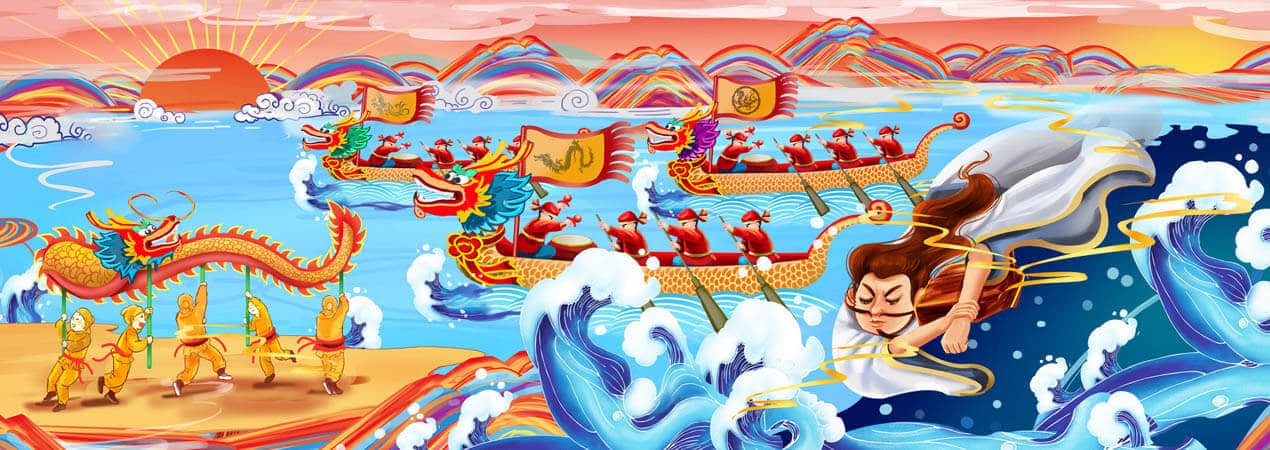
Famous tour sites related to dragon
Forbidden City in Beijing
As one of the two surviving royal palaces in China, the Forbidden City is your No.1 choice to visit dragon cultural relics in China. You'll find the dragon chair (throne), dragon robes, and various other images of dragons (and the dragon's sons).
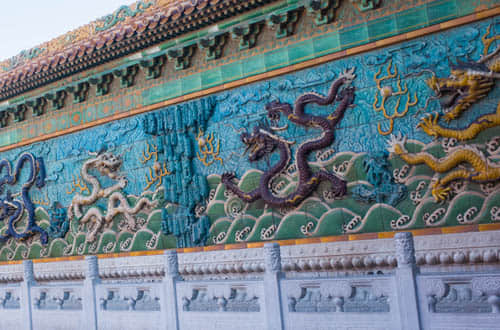
Nine Dragon Screen in the Forbidden City
Nine Dragon Screen in the Forbidden City in Beijing
It is located outside the Palace of Tranquility and Longevity (Ningshou gong). One of the three ancient nine-dragon screens in China, this one in the Forbidden City is the most exquisite. The entire wall has blue clouds as the background and green swirling water as its base. The Nine-Dragon Wall was built in 1733 (the 38th year of Emperor Qianlong in the Qing Dynasty), dating back over 200 years. It is 67 feet long and 11.5 feet tall.
Nine Dragon Screen in Beihai Park in Bejiing
Built-in 1756, the Nine-Dragon Screen is about 27 meters (about 88.6 feet) long, 6.65 meters (about 21.8 feet) high and 1.42 meters (4.66 feet) thick. It is composed of 424 seven-color glazed tiles that emboss the screen. There are in total 635 dragons on the screen.
Nine Dragon Screen in Datong
Built-in 1392, the Nine Dragon Screen is the oldest one in China. It is also the largest one, 8 meters(26.2 ft) high, 2.02 meters (6.6 ft) thick, and 45.5 meters (149 ft) long. If you have visited all of the three screens, you'll find the screen in Datong is much different than that in Beijing. The dragons have only 4 toes, while the dragons on the screen in Beijing have 5 toes. The reason is in ancient China, the five-toed dragon symbolized the emperor, the four-toed dragon the dukes.
Longqingxia (Longqing Gorge) in Beijing
Longqingxia is located about 85 kilometers (53 miles) away from Beijing. It is home to the world's longest escalator in the belly of a dragon. Shaped like a 258 meters (846 feet) long dragon, the escalator was painted bright yellow and can be spotted from miles! Once up the belly of the dragon, there are many adventure sports facilities available; the only unfortunate thing here is that the dragon only goes up, while coming down, you'll have to take the stairs.
Canglongling (Dark Dragon Ridge) on Huashan Mountain in Xi'an
Located 120km(75miles) northeast of Xian, Huashan (Mt. Hua) is one of the five most important mountains in China. Canglongling has one of the steepest paths in Mt. Hua. The ridge looks like a dark flying dragon. The ridge is over 100 meters long but its width is less than 1 meter. It is not for faint-hearted.
Longgong (Dragon's Palace) in Guizhou Province
Do you want to visit a dragon's palace? If so, this is the one for you! It is a large karst cave. You would need to take a boat to visit it.
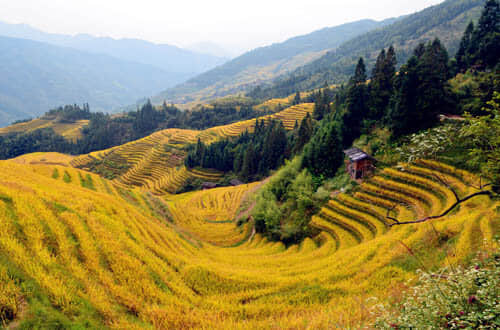
Longji Terrace Field
Longji (Dragon's Backbone) Terrace field in Guilin
About 2.5 hours drive from downtown Guilin. A vast region of rice terraces that stretches layer upon layer, coiling around from the base of Longji (the dragon's backbone) mountain to its summit. This is one of the most amazing rice terraces in China, the Dragon's Backbone Rice Terraces.
Lao Long Tou ( Old Dragon's Head ) Great Wall in Qinhuangdao
Old Dragon's Head was the starting point for the Great Wall of the Ming Dynasty (1368-1644 CE) in the east. The original wall and castle were built in 1579 by General Qi Jiguang and protruded into 23 meters into the sea. It resembles a long dragon dipping its head to drink water from the sea.
Dragon in the Chinese zodiac
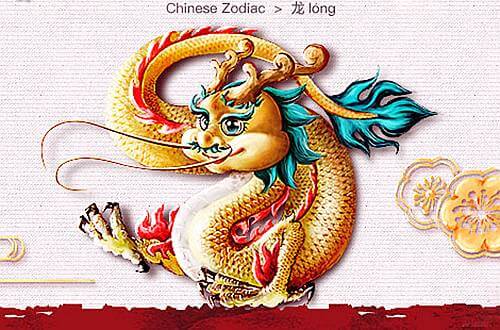
The dragon is also the fifth member of the Chinese Zodiac of the 12 animals. People born in the year of the dragon are said to possess revered qualities of the dragon, such as intelligence, pride, and ambition. But possible flaws are arrogance and impulsivity. Statistics show that women in China gave birth to 5% more babies than average in 2012, the most recent dragon year in Chinese astrology. The dragon years over the last century were 1916, 1928, 1940, 1952, 1964, 1976, 1988, 2000, and 2012, and the next one is 2024. Learn more about the Chinese zodiac, please click HERE.
Festivals related to Dragon
Longtaitou Festival (Dragon Rising Head Festival)
It falls on the 2nd day of the 2nd lunar month; the most famous tradition is getting a haircut. Some believe that going to the barber on this day gets rid of bad luck, while others believe getting a haircut during the first month of the lunar calendar brings bad luck. People perform dragon dance in some parts of China.
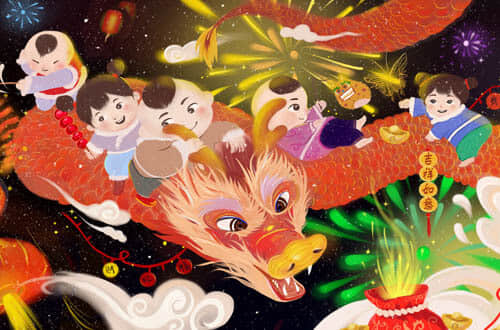
Duanwujie (Dragon Boat Festival)
Falling on the fifth day of the fifth month of the lunar calendar, is a tradition that commemorates the death of the poet and minister Qu Yuan, of the ancient state of Chu. Dragon Boat Festival is a holiday that involves racing dragon boats and eating zongzi – a rice dumpling wrapped in lotus leaves. While dragon boat racing may sound like something out of Game of Thrones, it is an impressive spectacle, the boats are traditionally between 50 and100 feet long and usually have a drummer onboard beating a rhythm for the crew to row to.
Dragon Dance
The dragon dance is probably the most well-known part of the Chinese Spring Festival celebrations. It is one of the older Chinese dances and can be traced back to the Han Dynasty (206 BC-220 AD). The dragons used in dragon dances can stretch up to 100 meters long. They are normally constructed with multiple "joints" held up by the dancers who twist and prance their way down a street. In Hong Kong, local people perform fire dragon dance, the most famous one is Tai Hang Fire Dragon Dance which has a history of 100 years. The performance of the fire dragon dance will be held at Tai Hang, Causeway Bay (best vantage point: Wun Sha Street) from 30 September to 2 October 2020.
Dragon bones and the discovery of Oracle Bone Script
According to Traditional Chinese medicine, dragon bones have vast healing powers. They were also thought to be the most effective. Dragon bones are said to be sweet, and dragon teeth would be used to treat a multitude of physical ailments. The prolonged intake would enable one to calm the spirit and lengthen his lifespan. Bones from China's west and south provinces were known for their high quality. The teeth and bones were crushed into a powder and boiled for some time before other ingredients were added for a specific concoction.
Chinese people used dragon bones as medicine for a long time, but no one noticed the inscriptions on them until one day in 1899.
One day in 1899, Wang Yirong(王懿荣), a famous scholar of ancient Chinese scripts, caught a cold and brought some Chinese medicine from a pharmacy. He noticed that a bone fragment had some interesting scribbles on it. Upon careful inspection, Wang suspected that the markings were an archaic hieroglyphic inscription, probably older than the then-oldest form of Chinese writing found on bronze vessels from the Western Zhou dynasty (1046–771 BCE). He was right. The inscription on the bones was the earliest writing ever found in China.
Wang's discovery immediately prompted an investigation into the source of these inscribed bones. Archaeologists soon realized that these texts were records of divinations from the late Shang dynasty (circa 1250–1046 BCE), about 3,000 years ago. Prayers would be written on a piece of bone, usually from turtle shells or animal bones, and then burned to see how the bone cracked.
If you are very interested in oracle bones, you should visit the Yinxu Museum in Anyang, about 2.5 hours by high-speed train from Beijing.
Famous people that bear the name 'Dragon'
Dragon in Chinese is known as 'Long' is an auspicious character and therefore, very popular as a name for the Chinese.
Chinese parents generally have great expectations for their children. There is a popular saying "Wangzi Chenglong" (hoping one's children become dragons) or for one's child to succeed in life. To achieve this, most Chinese parents will do all they can to give their children the best education as a career investment.
He Long (1896-1969), one of the 10 great marshals of The Chinese People's Liberation Army conferred in 1955. He is the Commander of the Nanchang uprising in 1927, which was the birth of The Chinese People's Liberation Army.
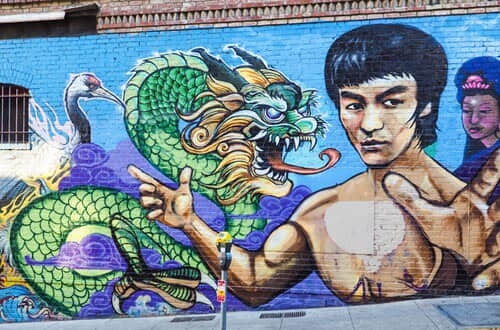
Bruce Lee, his Chinese name is Li Xiao Long (literally small dragon from the Li family). He is a well-known kungfu star from Hong Kong.
Jackie Chan, his Chinese name is Cheng Long (literally become a dragon), Hong Kong's lovable and best-known film star.
Sylvester Stallone, we translate it as Shi Tai Long (Shitai Dragon), American actor, director, screenwriter, producer, and artist.
Foods and drinks that is related to Dragon
Longxutang (Dragon beard cotton candy)
It is a hand-pulled traditional Chinese sweet similar to cotton candy. It is made by pulling a ring of hardened sugar into around 16,000 individual strands of candy. The ingredients are sugar and maltose syrup. It got its name from the fine malt sugar strands, which resemble the beard of the Chinese Dragon. The sugar mixture is stretched and twisted like noodles until it becomes fine strands of candy with a silk-like consistency. The strands are then wrapped around crushed coconut or peanut for added flavor to yield thumb-sized cocoon looking candies.
Long Xu Mian (Dragon beard noodle)
Dragon beard noodle is a very thin wheat noodle. In the hand of a noodle master, the noodles can be pulled into 37,000 strands, and the strand can go through the eye of a needle. It is very popular in the northern part of China and has a history of more than 300 years.
Legend has it that during Ming Dynasty (1368-1644 CE), there was a royal chef who invented a very thin noodle, which the Emperor liked. Thereafter, it became a very popular snack. As the noodles were as fine as hair, it was called dragon beard noodles. Traditionally, the noodles were eaten during the Longtaitou (literally "dragon raising its head") Festival, which falls on the 2nd day of 2nd lunar month (late February or early March in the Gregorian calendar).
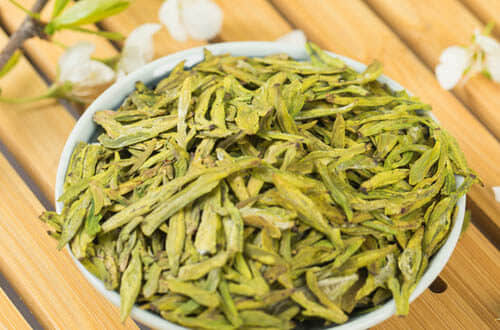
Long Jing Cha (Dragon well tea)
Produced in the West Lake area of Hangzhou, Long Jing, or Dragon Well is a fine green tea that is renowned for its appearance having a golden jade hue, and distinctive delicate fragrance and flavor. The tea gained recognition during the Qing dynasty by Emperor Qianlong(1711-1799 CE), who had a particular interest in tea plantations. One day, he was picking tea leaves in a tea garden in Hangzhou, and news from Beijing reached him that his mother was ill, he stored the tea leaves in his sleeve and returned to Beijing. He found that his mother had red eyes and a sore throat, but when she smelt the aroma from his son's sleeve, her health improved. Qianlong told her that they are tea leaves he picked in a tea garden in Hangzhou, his mother asks the servant to make tea with those tea leaves. His mother was cured by the drink.
The tea leaves can be found in some local dishes, one such is shrimp stir-fried with dragon well tea, which is a specialty of Hangzhou City.

OR
Are you eager to begin your Chinese cultural journey?
Drop us a line and we will promptly connect you with our leading China expert!
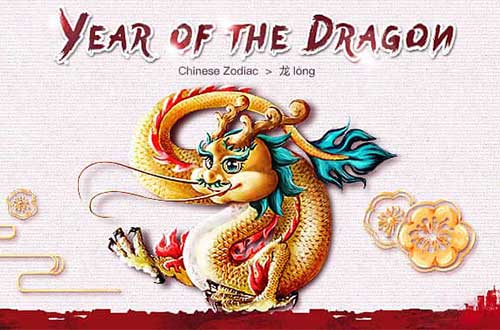 Year of the Dragon - Zodiac Sign 2024
Year of the Dragon - Zodiac Sign 2024 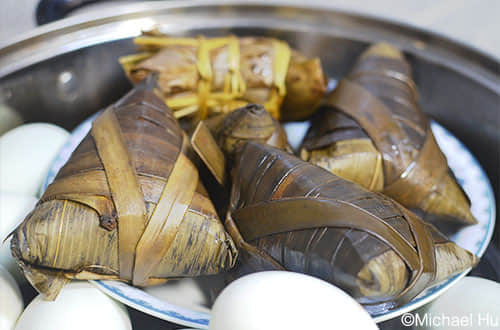 Dragon Boat Festival Food
Dragon Boat Festival Food  Dragon Boat
Dragon Boat  China Public Holiday Calendar
China Public Holiday Calendar